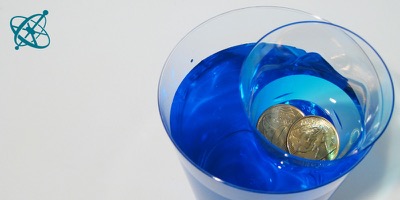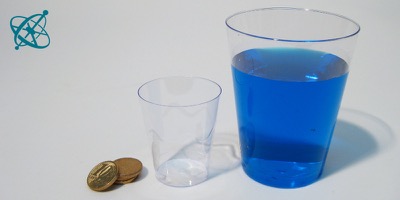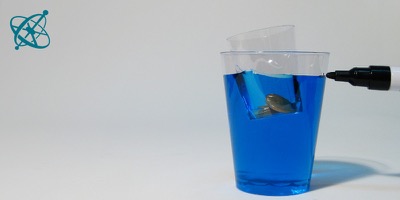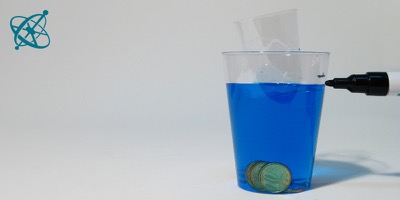 www.sciensation.org | Ciênsação hands-on experiments are published as Open Educational resources under a Creative Commons Attribution-ShareAlike 4.0 International License.
www.sciensation.org | Ciênsação hands-on experiments are published as Open Educational resources under a Creative Commons Attribution-ShareAlike 4.0 International License.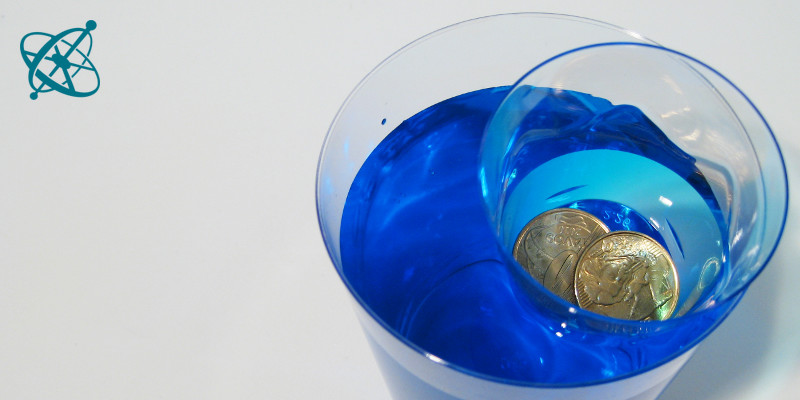
This is the great Archimedes on board of his little boat.
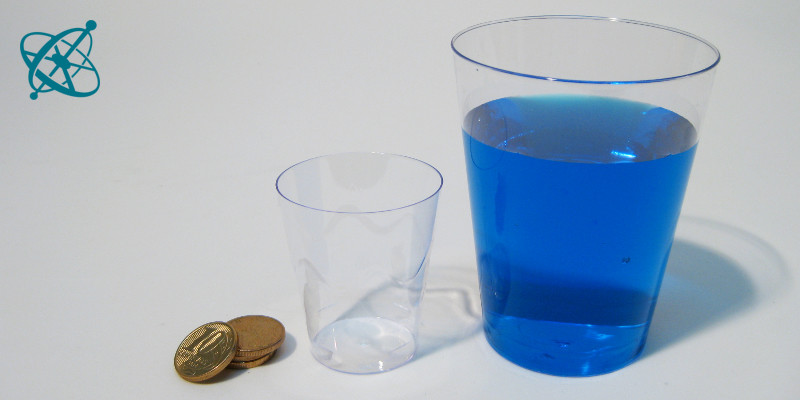
From left to right: Archimedes (coins), his boat (small cup), and the great sea (water in cup).
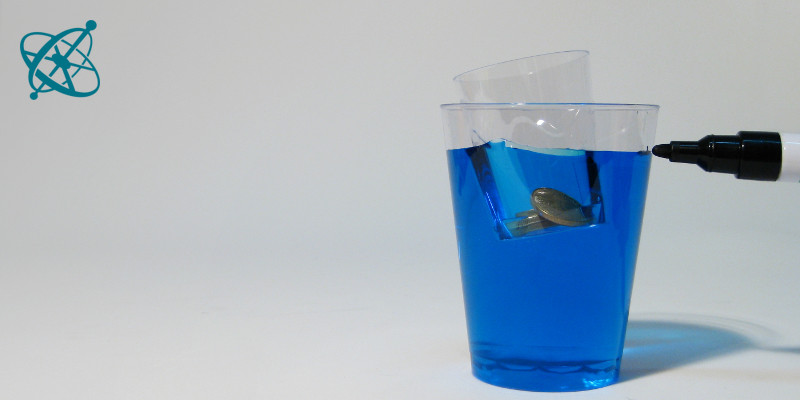
Mark the 'sea level' while Archimedes is on board.
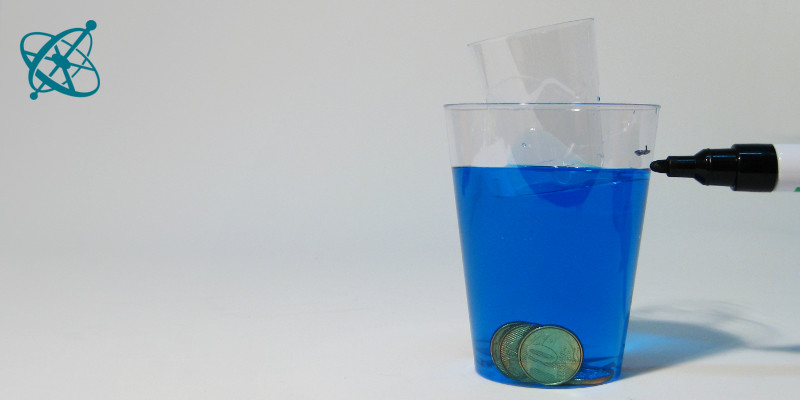
When he goes scuba diving, the sea level drops! Where did the water go?
Archimedes over board
This little puzzle is a nice way to close a lesson on density, buoyancy and Archimedes' principle: Let students conduct the experiment in class and look for an explanation at home.
Linking the concepts of mass, weight, volume, density and buoyancy.
An object in a boat displaces water according to its weight; an object under water displaces water according to its volume.
Coins, metal keys or stones
Water
While you tell a nice story about Archimedes going for a dive as part of his research, hand out the necessary materials.
Fill the larger plastic cap to 3/4 with water. Then let Archimedes (the coins or stone) enter his boat (the small cup) and make it float in the sea (large cup). Mark the water level on the larger cup. Next let Archimedes go for his dive by dropping the coins in the large cup – while his boat stays afloat.
1. How do you explain the difference in water levels?
2. Does Archimedes feel heavier inside the boat or inside the water?
What changes for the boat when Archimedes jumps into the water?
› It reduces its draft (flotation depth), i.e. it displaces less water.
Does Archimedes displace more water when he is in the boat or in the water?
› When he is in the boat.
On what depends the amount of water he displaces when on board?
› On his weight.
On what depends the amount of water he displaces while in the water?
› His volume.
Does Archimedes mass change when he goes overboard?
› No.
Does Archimedes feel the buoyancy on his own body while he sits in the boat?
› No, but he does while he is diving – and therefore feels less heavy under water.
In the boat, Archimedes displaces water according to his weight, while in the water he displaces water according to his volume. Since the density of 'Archimedes' (the coins or stone) in this experiment is larger than the density of water (that is why it is sinking), the volume of water he displaces while in the boat is higher than the volume of water he displaces when diving.
Still, Archimedes only feels the buoyant force while he is in the water, but not inside the boat. He therefore feels heavier in the boat than in the water.
